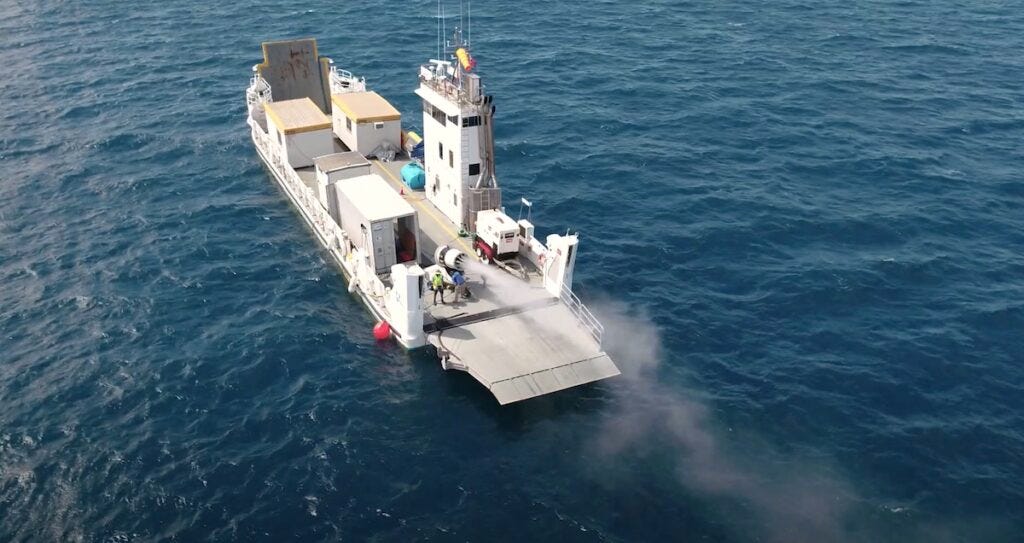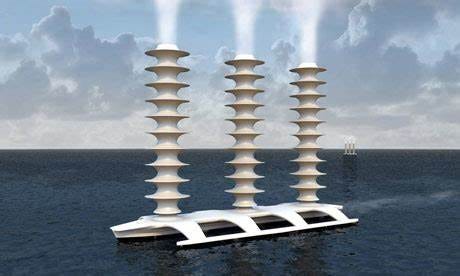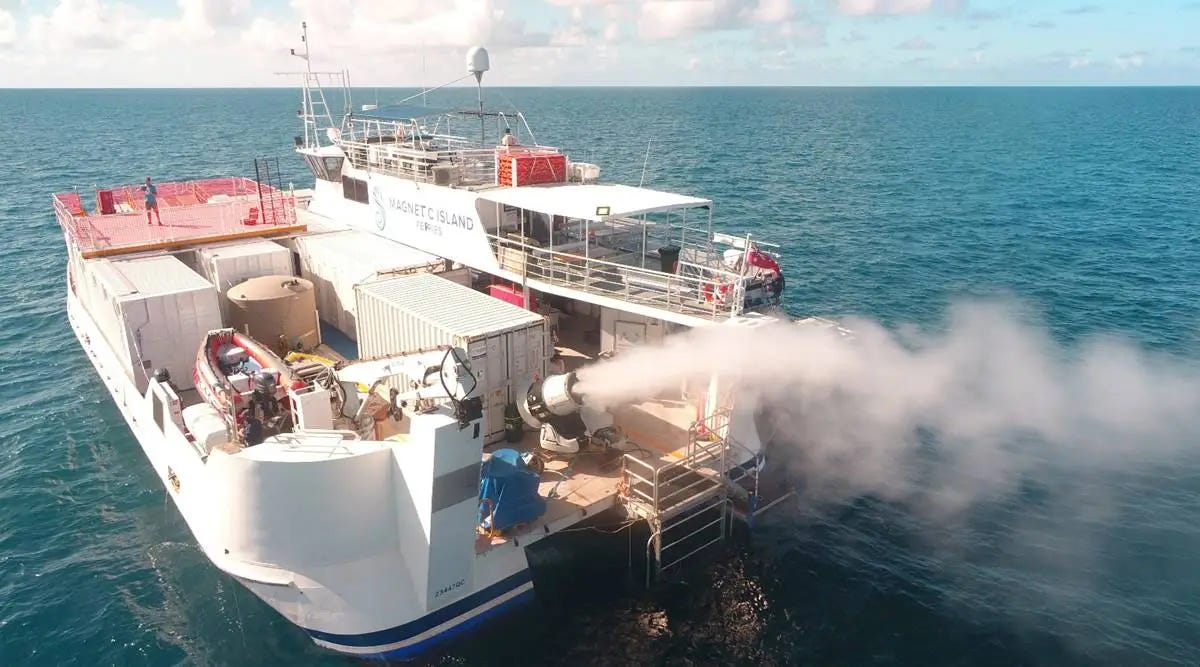Rescuing climate repair from the Sci-Fi trope
Using aerosols to reflect sunlight isn’t some wild new idea. It's what we've been doing.
When —rarely— mainstream publications do condescend to talk about climate repair, one trope is always trotted out: Sci-Fi. Schemes to cool the world that leverage a well-understood geophysical variable like albedo are the stuff of fantastical literature.
I don’t think I’ve ever read a story about stratospheric brightening that doesn’t tip its hat at Sci-Fi. It’s a brutally effective way to convey to your reader that there’s no need to take it seriously. This stuff, the label screams, is strictly for nerds.
The trope is a key reason why climate repair remains taboo. The more its techniques are presented as exotic, as “out-there,” the easier it is for sober-minded people to just ignore them. Calling it “sci-fi” creates a permission structure that interrupts engagement, exempting readers from the drudgery of thinking through the idea.
Alas, people who favor climate repair walk into this trap way too often.
The illustrations that accompany geoengineering proposals almost always have that geeky, sci-fi aesthetic, that look of unreality that subtly reinforces the view that these ideas aren’t quite serious, that they aren’t quite worth taking seriously.
The original batch of Marine Cloud Brightening mock-ups have that oddly retro-futuristic look of turn-of-the-century CGI.
They already look like visions of a future that never would be: sleek but low-res drone catamarans powered by far-out rotor sails.
Geeks love this stuff.
Of course we do!
As a communications strategy, though, they’re utter duds: images that come across as the idle doodlings of utopians.
Unreal stuff, really.
To break the taboo on climate repair we should be going in exactly the opposite direction: de-exoticising albedo-based interventions as much as we can. Rather than presenting these ideas as bold and path-breaking, we should stress the continuity between what we’re calling for and what we’re already doing.
Because brightening marine clouds by adding cloud condensation nuclei to them isn’t some wild new idea: it’s what maritime shipping has been doing, unwittingly, for the last two centuries.
The true face of Marine Cloud Brightening is not some wicked-cool conceptual sketch, it’s this:
Just a boring old container ship burning boring old bunker fuel and putting boring old sulfates in the air.
Using aerosols as atmospheric heat shields isn’t some wild concept awaiting empirical confirmation: it’s what smokestack emissions and tailpipes and dust storms have always done. Even stratospheric brightening isn’t really Sci-Fi: it’s just a thing volcanos do every once in a while, a thing we’ve experienced, measured, studied and have no need to fear.
This is true. But it’t not been communicated. Doing so would go a long ways towards allaying people’s fears. Because folks are understandably weary of the wholly untried in a way that’s different from how they feel about things that have been around for a while.
The Sci-Fi trope —with its connotations of absolute novelty— leads to a heightened perception of risk. Rather than leaning into this framing, we should run in the other direction: presenting aerosol-based climate repair as the humdrum thing we’ve been doing, badly, and could be doing, much better.
That’s why I like the images that came out of Australia’s 2019 marine cloud brightening trials. They show a relatively a normal looking boat carrying a relatively normal looking mister spraying salt into the air. Images like this undercut the sci-fi trope brilliantly.
Images like this make the technique look, well, kinda humdrum — and humdrum is much better than scary.
We should portray aerosol-based climate repair as ordinary both for communications reasons and also, more importantly, because it’s true. Shielding ourselves with aerosols isn’s Sci-Fi; it’s what we’ve been doing.
We should just be doing it much better.








Although I get your point, you are mischaracterizing Sci-Fi. Sci-Fi holds a special place among most works of fiction. Works of fiction can inspire change, and probably all scientists and quite a bit of science have been inspired by Sci-Fi. Many a scientist became scientists because of the influence of some Sci-Fi, the same can be said about a lot of technology.
Sci-Fi lets us explore the possibilities, it addresses the ethical consequences and concerns, utopias lets us hope for what could be accomplished while dystopias shows us what to avoid.
Perhaps if we had actual Sci-Fi covering this specific topic we would be in a better position.
The big NYT article last week almost portrayed releasing aerosols like something a Bond villain might do from his island lair. The NOAA scientists they talked to, I noticed, didn't actually describe their roles as protecting us from bad actors, though that's certainly what the article seemed to imply...